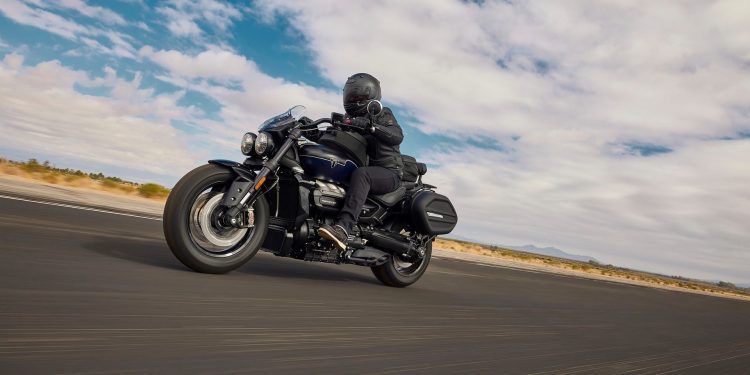2024 Triumph Rocket 3 Storm GT review
Words Peter Louisson | Images Triumph/PL
The best-laid plans of mice and men often go awry and it’s the same for monsters and men. We’d been planning to ride the latest version of Triumph’s monstering Rocket 3, in this case the Storm GT, but late winter weather (and work) stymied all that. Eventually the rubbish cleared away (weather not work) and everything was going swimmingly on a fine day until suddenly it wasn’t.
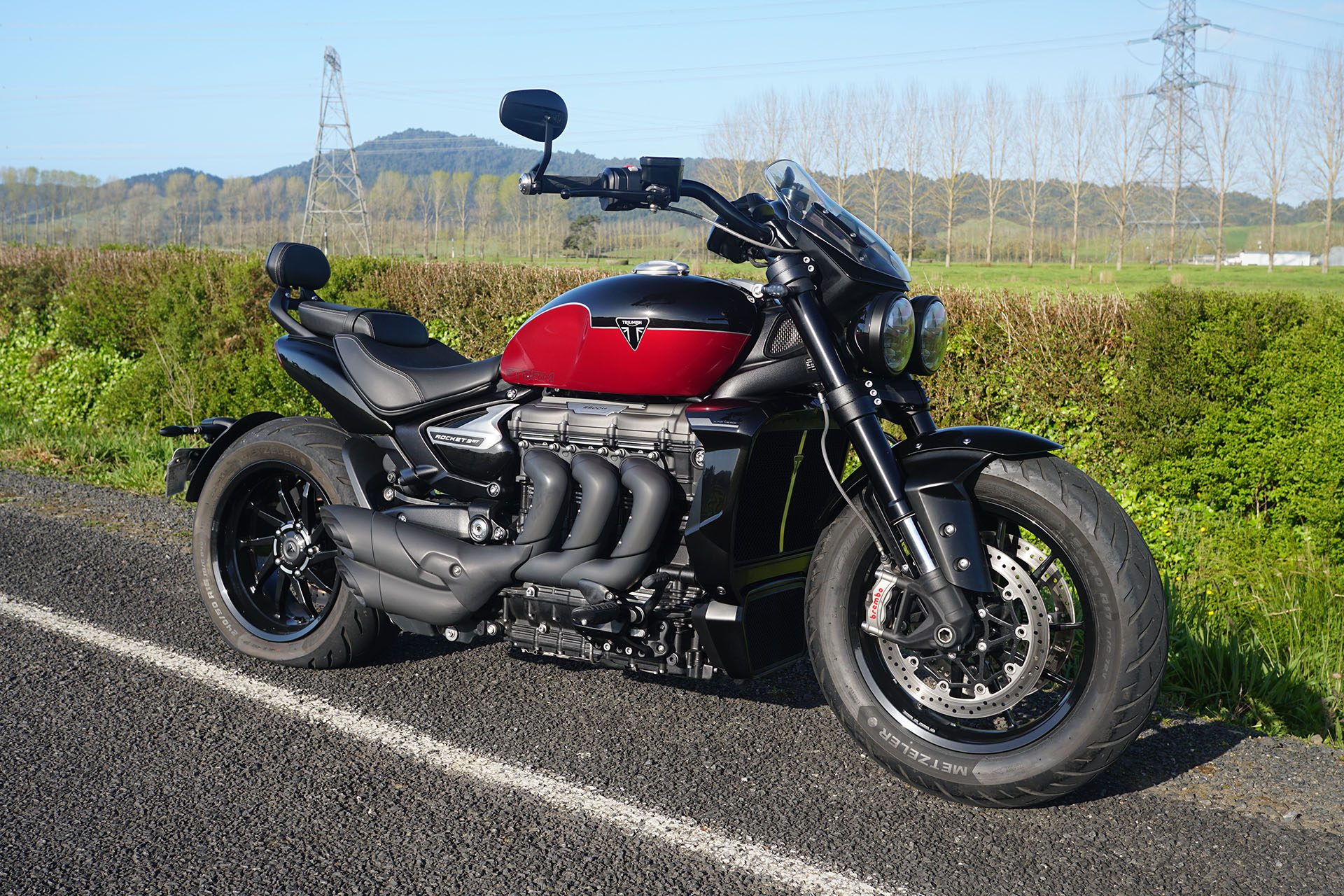
In roughly a quarter of a century testing new motorcycles for the magazine and over half of a century riding I’ve yet to have a puncture. Guess my luck ran out recently while riding the Triumph Rocket 3 Storm GT. There we were, tootling along at the legal limit, minding our own business, and suddenly it was panic stations. The tyre must have deflated within seconds, because one moment the bike was on rails, the next it felt like the forks were spaghetti. Most disconcerting. Still, on the upside, it wasn’t the front tyre that punctured; things might not have been so pretty. Anyhow, we slowed to a wobbly stop so no other damage to the bike, fortunately. And you really don’t want to mess up something that costs $41,990.
Not having had much experience with a flat tyre on a motorcycle, turns out it was a little tricky to sort. It didn’t help being midafternoon, and we were well out of town. Some of the towies have no experience with motorcycles and simply don’t want to know. Fortunately the folk at Brian Roberts towing in Pukekohe did, arriving with a truck that could lay its bed literally flat on the ground. Now I know why it’s called a flatbed. The driver had dealt with bikes before so knew exactly how to secure it properly.
No replacement for sheer capacity
Fortunately, we’d ridden it enough to get a reasonable idea of how it compared with the regular Rocket 3 R we checked out in 2023 ($39,990). Both this and the Storm R are updates on the second-generation bike, the major talking point being 15hp more and an extra 4Nm, because 221Nm clearly wasn’t quite enough. Other updates include lighter cast aluminium wheels for improved turning ability, different ergonomics, with a feet forward riding position, and there’s a wee back rest for the pillion as well. Our’s had a two-tone dark colour scheme with blacked out details and anodised finishes. It looks the power cruiser part.
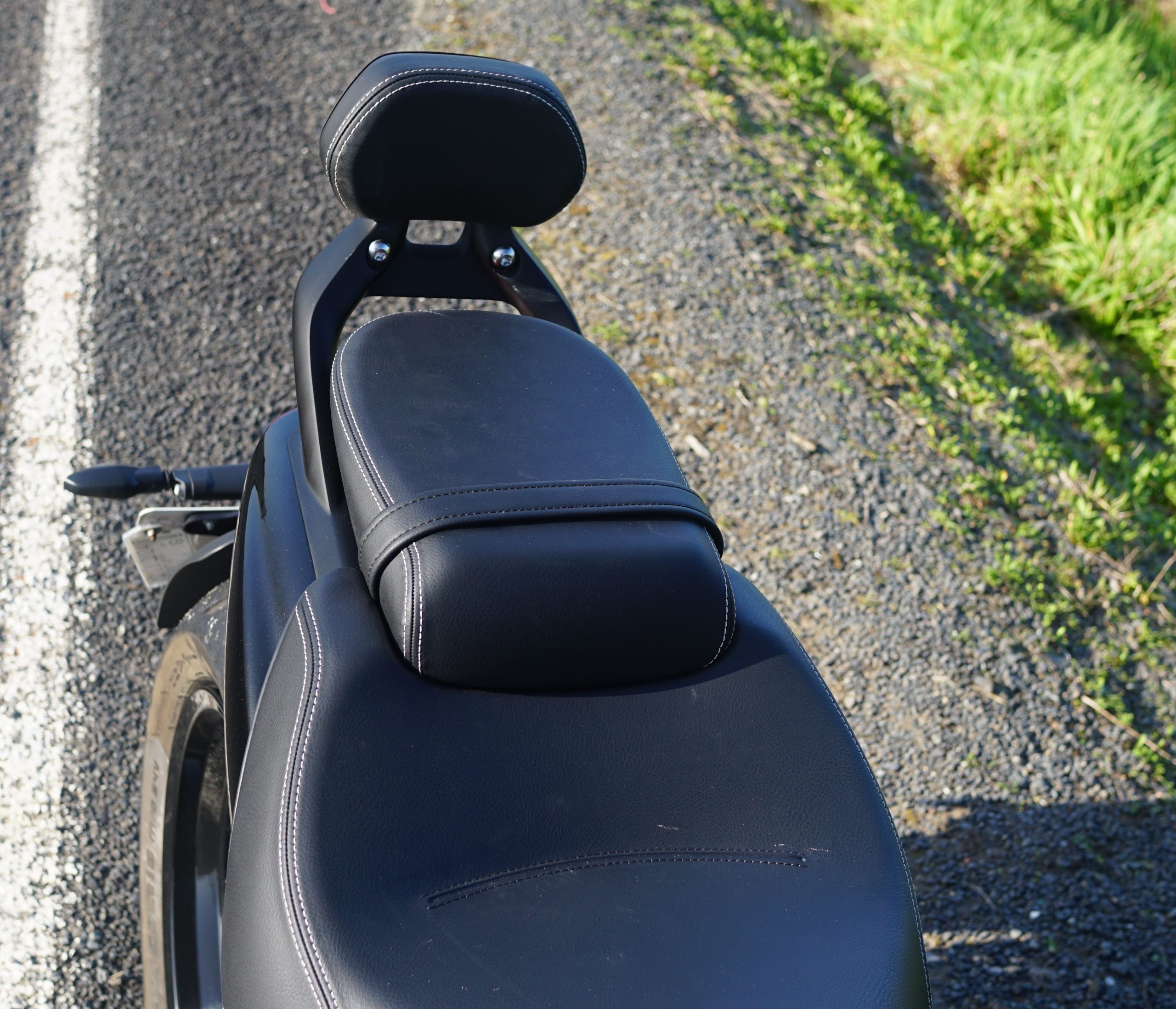
Riders are attracted to the Rocket 3 because of that enormous three-cylinder engine. At almost 2500cc, this wouldn’t look silly under the hood of a regular sedan. It’s all the capacity a Mazda6 used to get, for instance. The latest version is now Euro 5b emissions compliant and fuel use is less, a claimed 6.6L/100km. With an 18L tank expect up to 300km of range. It comes with four ride modes. We alternated between Road and Sport, both good.
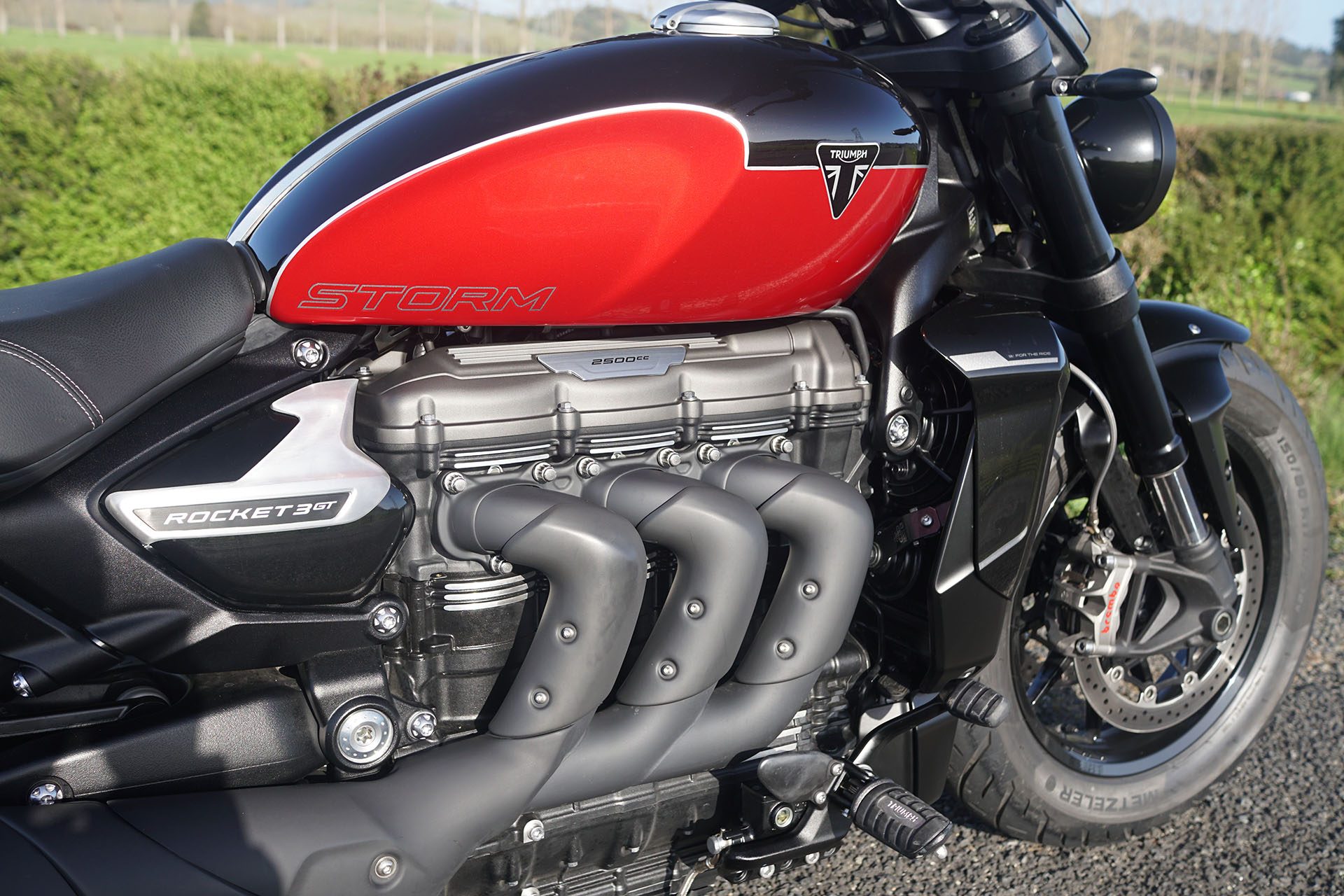
Surprisingly quicker than before
When it first came out Triumph took it to a track with a professional rider and managed to milk a 2.73sec 0-100 time of it. We couldn’t quite match that and this time we didn’t bother; the zero to 100 time involves so many variables. So instead, we rechecked the 80-120 time because it’s a better reflection of any power and torque upgrade. We used the same section of road as we did for the previous Rocket 3 R, by the by.
And we couldn’t quite believe the improvement from the last time we rode it either. Back then it just squeaked under 1.5sec for the 80-120 run. This time the Triumph Rocket 3 Storm GT best was just a hair above 1.2sec so that’s a marked improvement. Triumph describes it as “explosive acceleration”. Quite so.
Stronger brakes too
Surprisingly, the 100-0 time improved for this as well. This has seriously good quality brakes. Up front the radial-mount Brembo Stylema calipers still act on twin 320mm discs while at the rear a Brembo four-piston radial monobloc slows a 300mm disc. Last time out this managed a full-bore stop from the open road limit in 37m. This time, an even better 34.67m ABS stop which is the second-best result from any bike we’ve ever tested. Having so much rubber at the rear clearly helps. Perhaps not with punctures quite so much. This has a cruiser-like weight split too, so the big rear brake contributes more than it would, say, on a sports bike. In day to day use, these are the very definition of stopping power, the lever pressure required modest, the rear brake potent on its own. It’s impressive stuff, especially for a bike weighing in at 320kg.
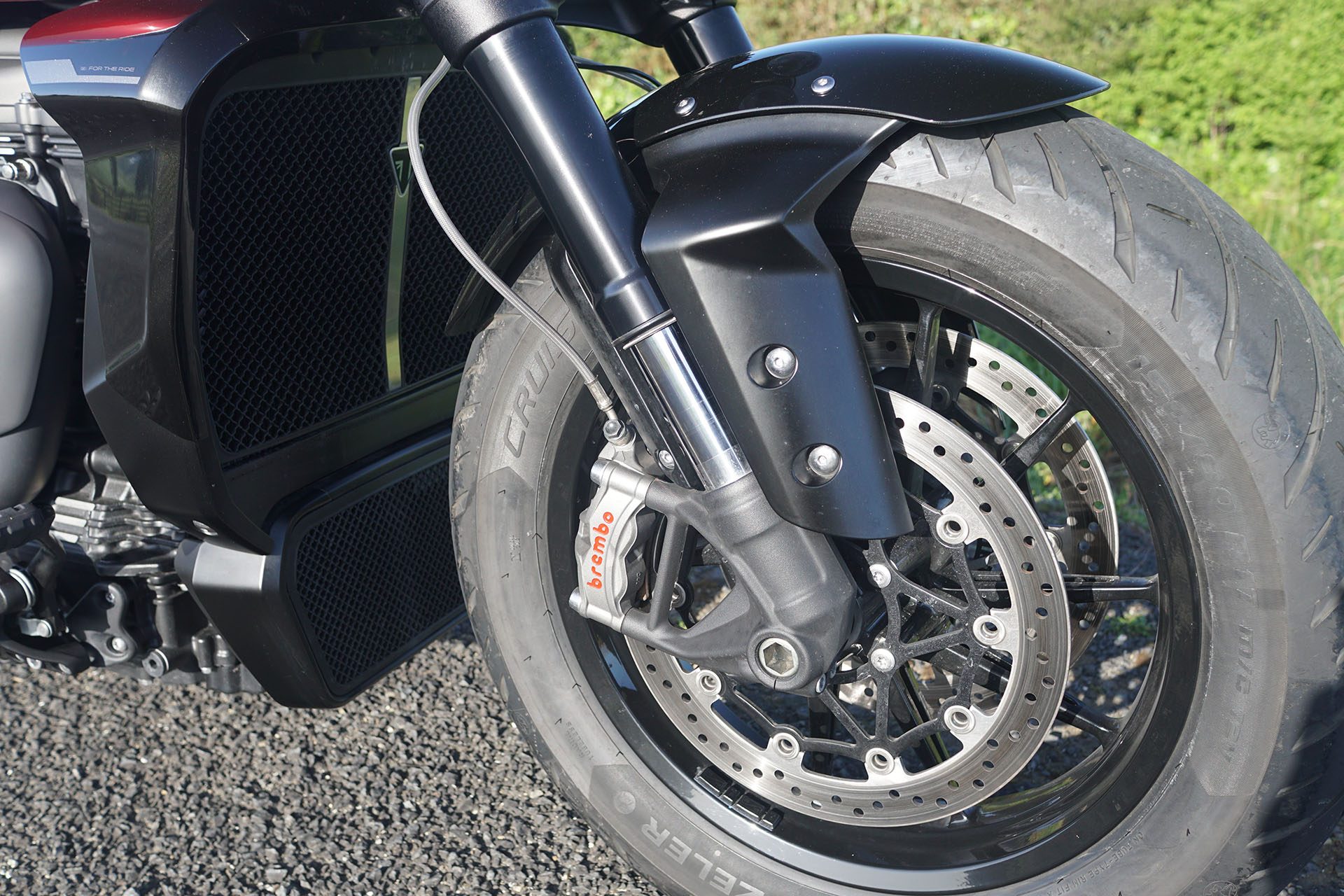
And so is the transmission. There’s an optional quickshifter that this tester didn’t have. But the standard ‘box is amongst the best I’ve experienced on any large cruiser. Most tend to be clunky, with lots of flywheel effect. So you need to time things just so, upshift early. On this you don’t need to hold your tongue just so, or restrict revs before upshifting. You simply hook another gear like you would on any regular (less mammoth-engined) bike. The action is smooth and lightweight, as is clutch lever pressure.
Built for distance work
And while we’re on about such things, the engine is just creamy in operation. There’s so little vibration that you don’t even think about it. The bar-end mirror reflections are picture perfect, and being wide set show only what’s behind, not what brand of jacket you’re wearing.
Plus the engine is just so easy and laid back. You’d think something outputting 134kW and 225N would be like wrangling a wild steer but it’s much more domesticated in reality. The GT will loaf along in town with just 1200rpm showing, all without stress. At 2000 you’re mooching at 80km/h, while 100km/h is a car-like 2250rpm. At 3000rpm things are starting to get reasonably illegal. Given how this is such a natural at long distance cruising, it’s appropriate they’ve fitted it with cruise control. Our’s had heated grips too.
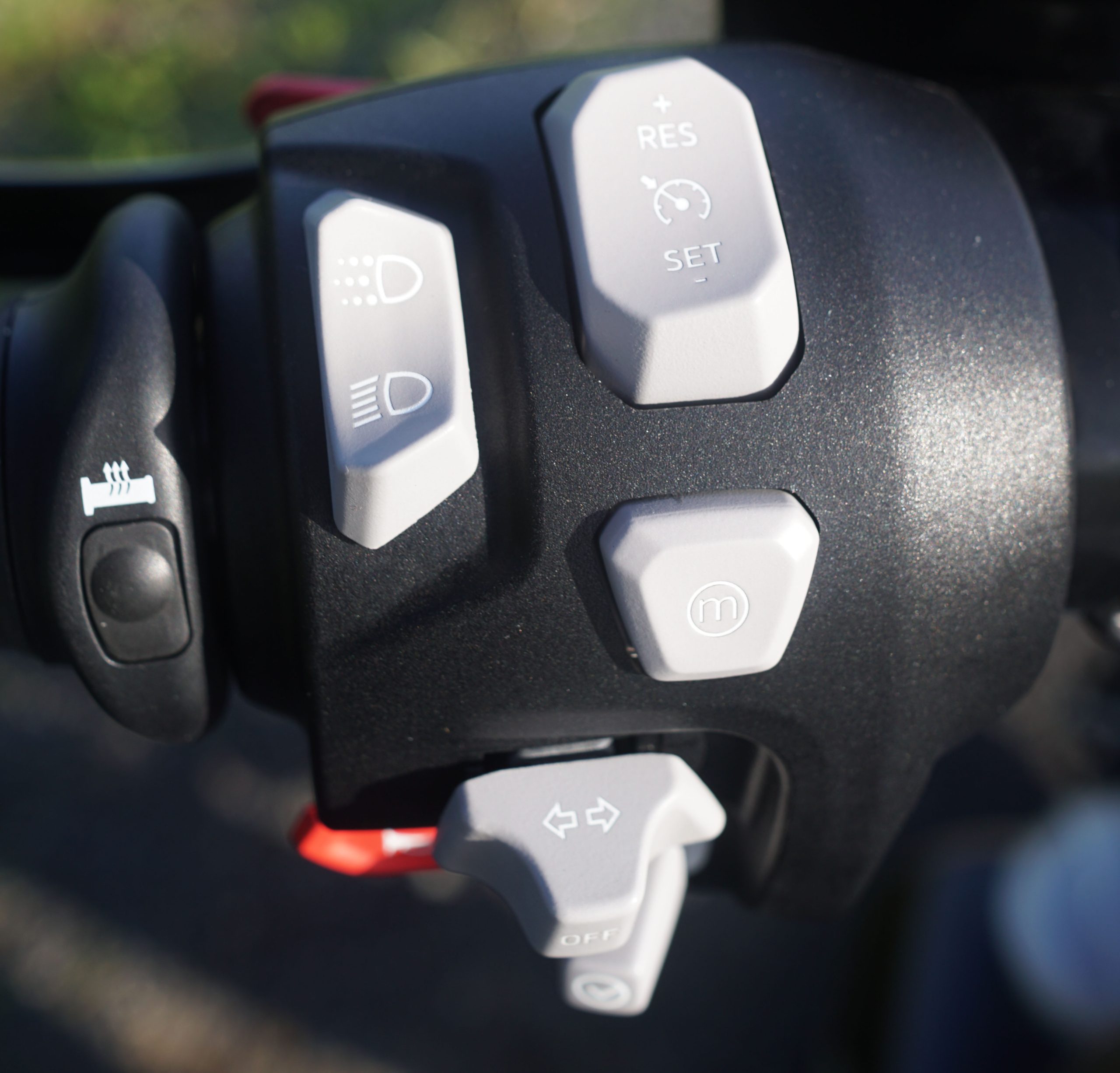
And being good at distance work is not always the case with cruisers. They’re often challenged ergonomically and have short travel rear suspension that can’t manage the bigger hits. The Triumph Rocket 3 Storm GT has a feet-forward riding position (which is adjustable by 50mm) and easy reach bars. That means you can sit back and rise up on the rear of the seat slightly, anticipating the bigger bumps. If you’re not a fan of this set up, there’s always the Storm R which has midmount pegs, a sportier riding triangle and a slightly higher seat.
Initially we found the ride a bit firm but there’s easily adjustable preload at the rear. It’s not obvious at first as the rotary adjustor is hidden away up under the seat. Bingo; what a difference. Such good quality suspension Showa here. We didn’t mess with anything else but it’s almost fully adjustable each end.
The lack of vibes and no chain final drive – it’s a shaftie – help with long distance duties too.
Lighter in the turn
We rode it just enough to get the impression that it turns a bit easier, less energy required. It’s still hardly quick in that department – not with a wheelbase this long – but you adjust to that by starting out extra wide and making sure to apex the corner just so. That makes cornering lines more open so less lean is needed. You’ll not touch down on this often either; ground clearance is way better than most in the cruiser class. Higher pegs help.
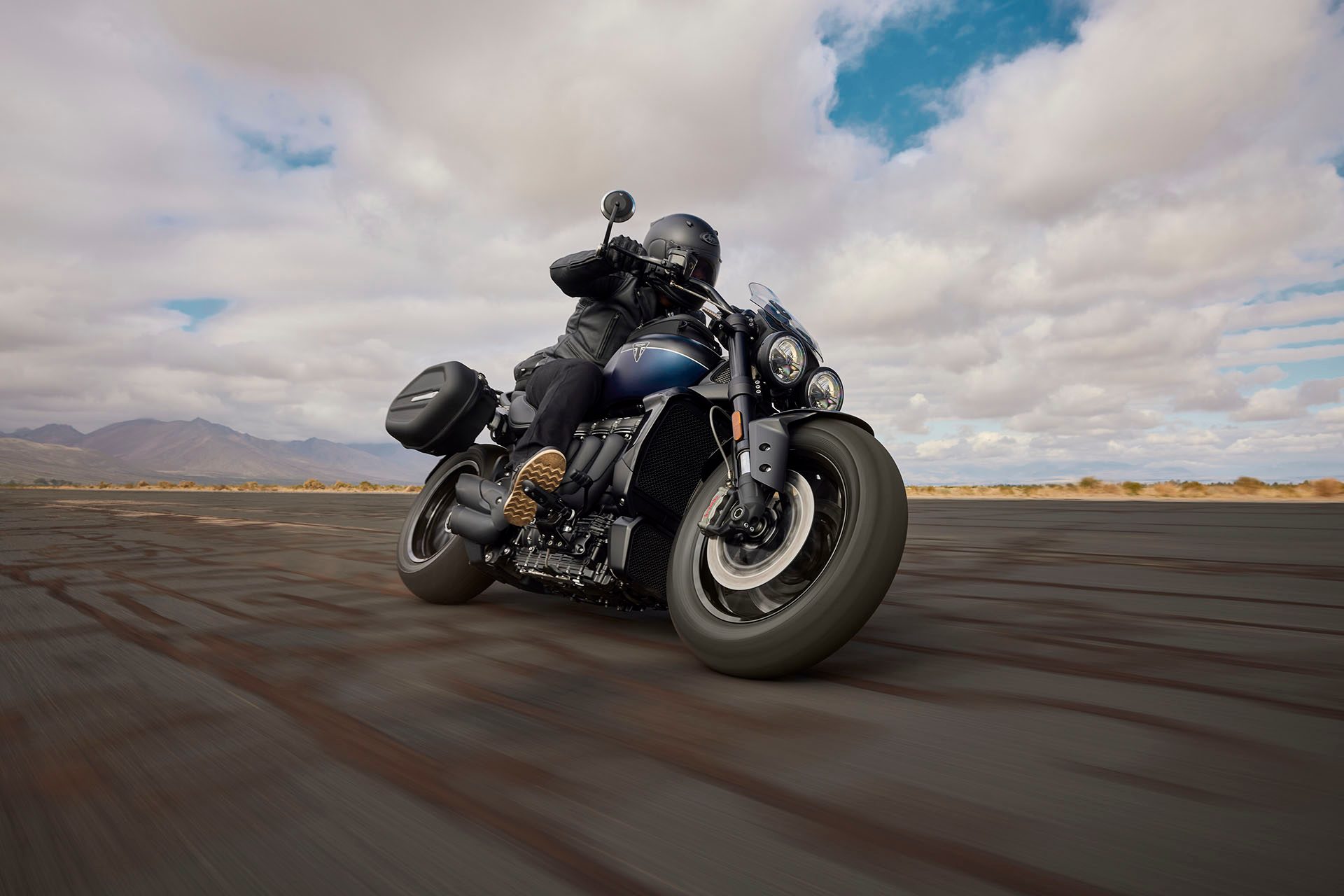
We really enjoyed our time on the second-gen Rocket 3 R and this Storm GT variant is every bit as good, only quicker and with seemingly better braking ability. Small wonder they’ve sold over 18,000 of these since the second-generation launched in 2019. This has a two-year warranty and a host of available accessories, including luggage. Primary competition is Ducati’s Diavel V4 but that’s $5k more expensive.
Can’t say our experience riding this Triumph Rocket 3 Storm GT was quite as satisfactory as the last time but a puncture is hardly its fault. We hope to have another never again.


